Percents
Percents are a way of expressing a number as a fraction of 100. The percent symbol (%) is used to represent percents. For example, 50% is the same as the fraction 50/100, which reduces to 1/2.
Converting between percents, fractions, and decimals
To convert a percent to a decimal, divide the percent by 100. For example, to convert 25% to a decimal, you would divide 25 by 100 to get 0.25.
To convert a percent to a fraction, simply write the percent as a fraction with a denominator of 100 and then simplify if possible. For example, 75% is equivalent to 75/100, which simplifies to 3/4.
To convert a fraction to a percent, divide the numerator by the denominator and then multiply by 100. For example, to convert 3/5 to a percent, you would divide 3 by 5 to get 0.6, and then multiply by 100 to get 60%.
Calculating percentages
To calculate a percentage of a number, you can use the following formula:
Percentage = (Part / Whole) x 100
For example, if you want to find 20% of 80, you would use the formula:
Percentage = (20 / 80) x 100 = 0.25 x 100 = 25
Applications of percentages
Percentages are used in many real-life situations, such as calculating discounts, tips, taxes, and interest. Understanding how to work with percentages is important for managing personal finances and making informed decisions about purchases and investments.
Study Guide
- Understand the concept of a percent as a fraction of 100.
- Practice converting between percents, fractions, and decimals.
- Learn how to calculate percentages using the formula (Part / Whole) x 100.
- Apply percentages to real-life situations, such as calculating discounts and interest.
- Practice solving word problems involving percentages.
By mastering the concept of percentages and being able to convert between percents, fractions, and decimals, you will be well-prepared to tackle a wide variety of math problems and real-world applications.
[Percents] Related Worksheets and Study Guides:
.◂Math Worksheets and Study Guides Fifth Grade. Percents
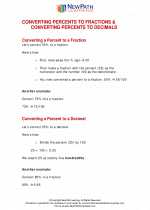
 Activity Lesson
Activity Lesson
 Activity Lesson
Activity Lesson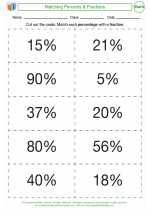
 Worksheet/Answer key
Worksheet/Answer key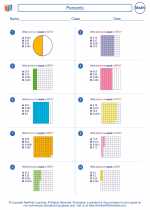
 Worksheet/Answer key
Worksheet/Answer key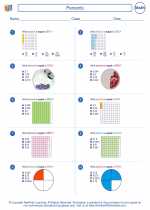
 Worksheet/Answer key
Worksheet/Answer key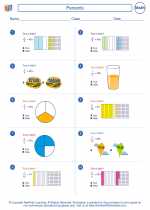
 Worksheet/Answer key
Worksheet/Answer key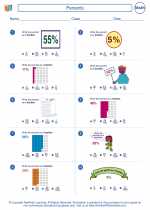
 Worksheet/Answer key
Worksheet/Answer key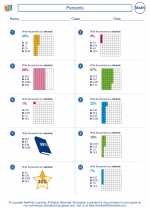
 Worksheet/Answer key
Worksheet/Answer key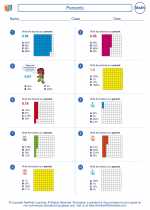
 Vocabulary/Answer key
Vocabulary/Answer key
